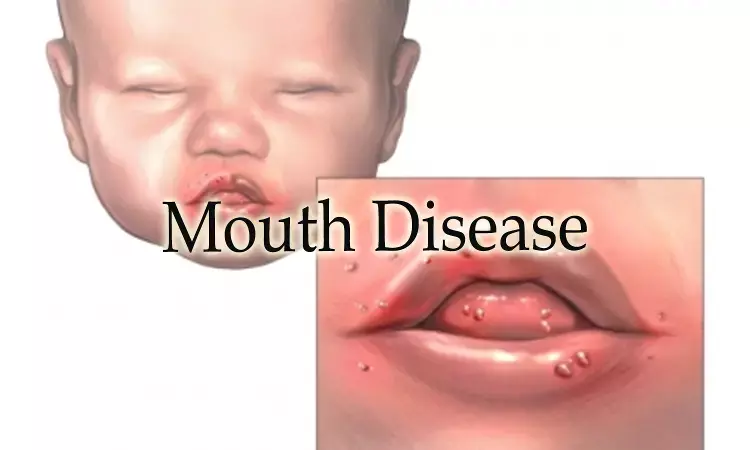- Home
- Medical news & Guidelines
- Anesthesiology
- Cardiology and CTVS
- Critical Care
- Dentistry
- Dermatology
- Diabetes and Endocrinology
- ENT
- Gastroenterology
- Medicine
- Nephrology
- Neurology
- Obstretics-Gynaecology
- Oncology
- Ophthalmology
- Orthopaedics
- Pediatrics-Neonatology
- Psychiatry
- Pulmonology
- Radiology
- Surgery
- Urology
- Laboratory Medicine
- Diet
- Nursing
- Paramedical
- Physiotherapy
- Health news
- Fact Check
- Bone Health Fact Check
- Brain Health Fact Check
- Cancer Related Fact Check
- Child Care Fact Check
- Dental and oral health fact check
- Diabetes and metabolic health fact check
- Diet and Nutrition Fact Check
- Eye and ENT Care Fact Check
- Fitness fact check
- Gut health fact check
- Heart health fact check
- Kidney health fact check
- Medical education fact check
- Men's health fact check
- Respiratory fact check
- Skin and hair care fact check
- Vaccine and Immunization fact check
- Women's health fact check
- AYUSH
- State News
- Andaman and Nicobar Islands
- Andhra Pradesh
- Arunachal Pradesh
- Assam
- Bihar
- Chandigarh
- Chattisgarh
- Dadra and Nagar Haveli
- Daman and Diu
- Delhi
- Goa
- Gujarat
- Haryana
- Himachal Pradesh
- Jammu & Kashmir
- Jharkhand
- Karnataka
- Kerala
- Ladakh
- Lakshadweep
- Madhya Pradesh
- Maharashtra
- Manipur
- Meghalaya
- Mizoram
- Nagaland
- Odisha
- Puducherry
- Punjab
- Rajasthan
- Sikkim
- Tamil Nadu
- Telangana
- Tripura
- Uttar Pradesh
- Uttrakhand
- West Bengal
- Medical Education
- Industry
Patients of early onset Sjogren's syndrome may present with features of no or low dryness of mouth

Sjogren's syndrome, an autoimmune disorder primarily known for causing dryness in the mouth and eyes, may present differently in a subset of patients. A recent study from a French tertiary reference center has shed light on a distinct group of Sjögren's syndrome patients who exhibit little to no dryness symptoms. This study was published in BMC Rheumatic and Musculoskeletal Diseases by Alexandra Kachaner and colleagues.
The Study Findings:
Researchers at the French referral center included 509 patients diagnosed with Sjögren's syndrome according to established criteria.
The patients were divided into groups based on the presence and severity of subjective and objective dryness symptoms.
Patients with low or no subjective dryness (53 individuals) were compared with those reporting high subjective dryness (456 patients).
Patients with low objective dryness (113 individuals) were compared with those displaying high objective dryness (359 patients).
Key Results:
- Age and Diagnosis Time: Patients with low or no subjective dryness were significantly younger at a median age of 49, compared to 58 in the high subjective dryness group. They were also diagnosed earlier, with a median time from symptom onset to diagnosis of 2 years, in contrast to 4 years in the high subjective dryness group.
- Autoantibodies: Patients without high subjective dryness displayed a higher frequency of anti-SSA positivity (83%) compared to those with high dryness symptoms (64%).
- Minor Salivary Gland Biopsy: Among patients without high subjective dryness, 69% showed less focal sialadenitis in minor salivary gland biopsy, while 83% of those with high dryness features exhibited it.
- Objective Dryness: Similar trends were observed in patients without high objective dryness, including younger age (median age of 51), a higher percentage of anti-SSA positivity (79%) compared to the group with high objective dryness.
- Disease Activity: No significant difference was observed in disease activity between the two groups.
Conclusions:
The study revealed a distinct profile among Sjögren's syndrome patients who lack pronounced dryness symptoms. These individuals tend to be younger, receive a faster diagnosis, are more frequently anti-SSA positive, and exhibit less focal sialadenitis in minor salivary gland biopsy. Importantly, their disease activity remains comparable to those with high dryness features.
These findings highlight the complex and varied nature of Sjögren's syndrome and emphasize the need for healthcare providers to consider atypical presentations when diagnosing and managing the condition. Further research is warranted to explore the underlying mechanisms and long-term outcomes in this unique subset of Sjögren's patients.
In summary, this study challenges the conventional understanding of Sjögren’s syndrome and underscores the importance of a comprehensive approach to diagnosis and treatment that accommodates the diversity of patient experiences.
Reference:
Kachaner, A., Bergé, E., Desmoulins, F., Le Pajolec, C., Rousseau, A., Labetoulle, M., Nocturne, G., Mariette, X., & Seror, R. Comparison between primary Sjögren’s disease patients with high or low level of dryness. RMD Open,2023;9(4):e003291. https://doi.org/10.1136/rmdopen-2023-003291
Dr Riya Dave has completed dentistry from Gujarat University in 2022. She is a dentist and accomplished medical and scientific writer known for her commitment to bridging the gap between clinical expertise and accessible healthcare information. She has been actively involved in writing blogs related to health and wellness.
Dr Kamal Kant Kohli-MBBS, DTCD- a chest specialist with more than 30 years of practice and a flair for writing clinical articles, Dr Kamal Kant Kohli joined Medical Dialogues as a Chief Editor of Medical News. Besides writing articles, as an editor, he proofreads and verifies all the medical content published on Medical Dialogues including those coming from journals, studies,medical conferences,guidelines etc. Email: drkohli@medicaldialogues.in. Contact no. 011-43720751


